Exploring England's best gourmet counties
The spoils of land and sea in some of England's most glorious counties ensure that good food always awaits. Alex Mead reveals where to look
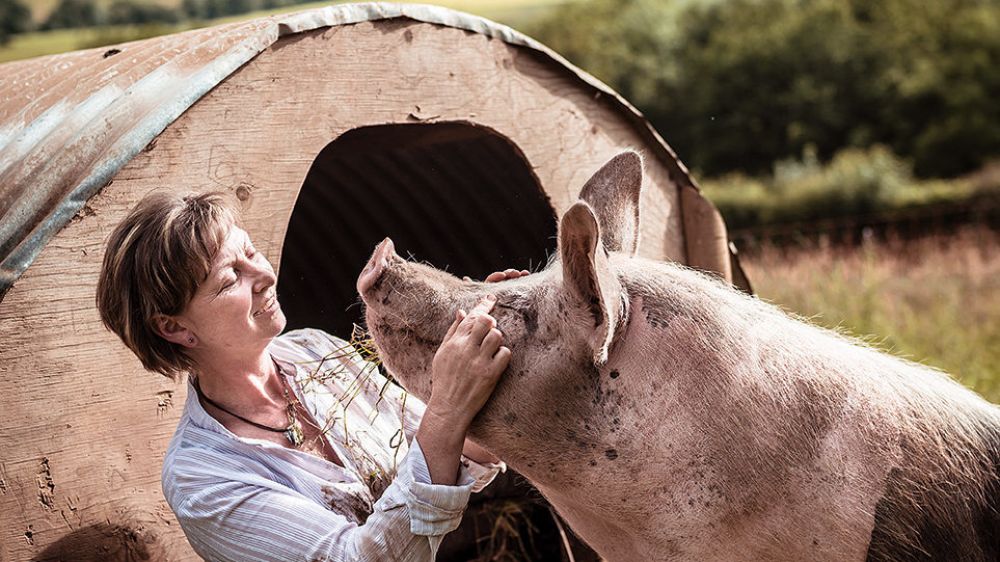
The spoils of land and sea in some of England's most glorious counties ensure that good food always awaits. Alex Mead reveals where to look
The ducks are a Michelin-starred favourite, the cheese is 'Tasty' in every sense, the cakes have achieved worldwide fame and the beers cast a spell – welcome to Lancashire's Ribble Valley
So much of Lancashire's food is about comfort: assorted fruit snuggled up together in pastry for Chorley and Eccles cakes; the best end and middle of lamb neck baked and bubbling in a meaty gravy beneath a layer of potato for a hotpot; Bury black pudding, just touching the hot pan, to soften in a rich, spiced butter. And that’s before you get to the pies, all of them like cosy pastry cottages for their famous residents: butter; cheese and onion; and, of course, meat and potato.
But head into the Ribble Valley, a 583sq km chunk of undulating Lancashire countryside which takes its name from the eponymous river that starts in the Yorkshire Dales and ends in the Irish Sea, and you begin to see it's the quality of the ingredients that sets those hotpot and pastry dishes apart.
Largely made up o the Forest of Bowland, whose fells, valleys, moorlands and woodland stretch into Yorkshire, the Ribble Valley has become the pantry of Lancashire, with chef Nigel Haworth among the first to sing its praises. He took up the mantle of head chef at the Northcote, on the edge of the area, in 1984 – a role he only completely relinquished in 2017, handing the reins to long-term cohort Lisa Goodwin-Allen. He was joined in the chorus of produce worship by Lancastrian Paul Heathcote, who won two Michelin stars at his restaurant in the village of Lonridge, just north of the River Ribble.
Both believed that, in the Ribble Valley, they had the greatest of kitchen gardens. Duck was always on the menu, in particular Goosnargh duck. Once a secret shared only by local chefs, its now the duck of choice for many elite chefs across the country.
The breed – a cross between Aylesbury and Peking, known for its meatier, tender breast meat – was made famous by the late Reg Johnson, a much-loved local farmer who supplied both Nigel and Paul, working hard to develop the best-tasting waterfowl around. Soon, the lessons learned with the ducks – named after their village of residence west of Longridge – were applied to other poultry and now Goosnargh corn-fed chickens can be found on menus in starred restaurants everywhere.
Across the valley, between ancient villages, grazing in stonewalled fields, swimming in rivers flowing fast beneath stone-arch bridges, there lies good produce and artisans who know how to use it. From the British White cattle, known for its lean, flavour-packed meat, with origins in the 16th century and the lands of Whalley Abbey, to craft beers inspired by the area’s infamous witch trials and the tinkle of china in village tearooms and country pubs, food and drink is everything in the Ribble Valley.
For many, Lancashire cheese tops it all. Started by peasants in the 13th century – the age-old method used the curds from several milking sessions until they could form cheeses (hence two- or three-day curd).
The modern take – going back to ‘just’ 1892 – turns it into clothbound barrels. Both Creamy and Tasty Lancashire (think Lancashire Bomb) are still made in this way, with the latter matured for a stronger flavour. The tangy Crumbly Lancashire is the black sheep of the trio, as it uses curds from a single day.
Both award-winning Mrs Kirkham's and Shorrock's – makers of the Lancashire Bomb – call Goosnargh home, with a further four sharing the PR3 postcode, so take a cycling tour around them. Few food tours can offer a better bike-to-bite ratio than this one.
The same can be said for a jaunt through the whole area. The finest food and drink live cheek-by-jowl, and with the journey between each stop being so pretty, travelling is almost as a good as arriving.
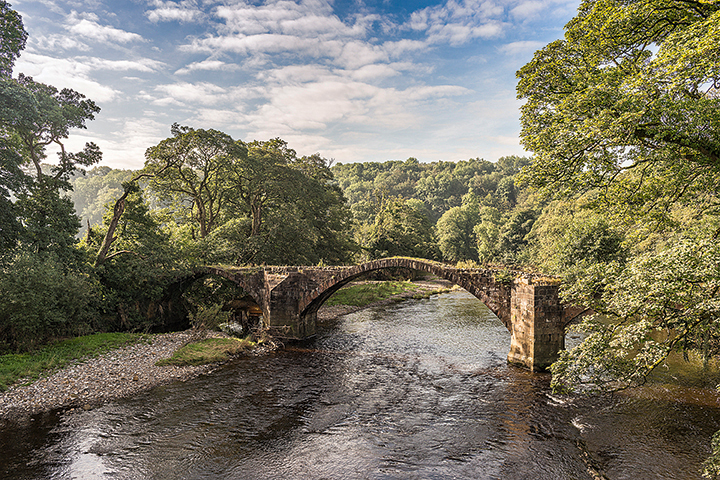
Photo by Gary Latham
It's with good reason that Simon Rogan set up shop in the Lake District, and it's not (just) for the sticky toffee pudding and Kendal mint cake
In the county for which ‘chocolate-box’ is almost a compulsory prefix when describing its villages, houses and independent shops, conversations on Cumbria's food credentials often start with what happens at the end, not the beginning.
The most decadent of 'afters', the sticky toffee pudding is said to have had its 1970s origins at the Sharrow Bay Country House Hotel – where Francis Coulson and Robert Lee made the moist, yet fluffy, sponge with chopped dates – and is the stuff of dessert legend. There's intrigue, too, as some claim it first hailed from Lancashire (just don't tell the people of Lakeland). Of course, before you even get to dinner you may have enjoyed a slab of Kendal mint cake to fuel a glorious yomp through England’s most mountainous region, pushed on by the thought of another breathtaking view of its famed glass-like glacial lakes. You may also have stopped off in Cartmel, for another speciality popular among the sweet-toothed fraternity – Grasmere gingerbread. Invented in the 1850s, word of how good it was spread far and wide, bringing Victorian steam-train travellers to the village in their droves.
But in the Lakelands, where invigorating fresh air, the cleanest waters and verdant mountain valleys provide the most perfect of settings for growing, rearing or catching anything, it’s the county’s much-lauded larder, coupled with the staggering setting, that has drawn some of the country’s top chefs to
set up shop within its borders.
On the doorstep of the village that’s also home to Cartmel Village Shop – bakers of myriad sticky puddings (from banana to ginger and toffee apple) – Simon Rogan and his two-Michelin-starred L’Enclume are an institution, shining the biggest of spotlights on the area’s quality produce. Whether it’s on his menus or in the pages of his cookbooks, two of the area’s finest food champions make regular appearances: Herdwick lamb and damsons.
Damsons are a Lake District staple. Once the land was full of orchards of these yellow-fleshed, purple-skinned fruits that pop with flavour. After every harvest before the Second World War, Saturdays in Kendal would be rebranded ‘Damson Saturday’ as the streets were filled with cartloads, ready to be taken south and across all of England.
They might not fill the markets in the same way they once did, but they’re still found on the shelves of shops, restaurants and homes in endless forms of liqueurs, gins, puddings, chutneys, jams and jellies. Rogan, who also grows them on his own 5ha farm, combines them with a dark chocolate fondant, where the shared sweet-tart characteristics of the two ingredients make for the ideal flavour combination.
Even taking into consideration the trout and Windermere char from the lakes themselves, Herdwick sheep – with their distinct gamey flavour – get top billing in many local restaurants, among them The Forest Side restaurant, led by chef Paul Leonard, which serves Herdwick hogget with sweetbread and turnip.
Roaming free across the mountains, grazing on heather-clad fells and wild grass, the hardy sheep was helped to fame by Beatrix Potter, Lakeland’s most famous daughter, who was also the first female president of the Herdwick Sheep Breeders Association. Leaving her 13 farms and 1,619ha to the National Trust, she insisted on Herdwicks being allowed to graze the hills. These days, at Yew Tree Farm, they still do just that, albeit joined by Belted Galloway cattle and pigs – who do their bit in creating another local favourite, the Cumberland sausage.
Whether it’s the Herdwicks, the immigrant Galloways or the aforementioned pigs, all of them benefit from the freedom and flavours of the Lakelands that make this area so unique and forever irresistible to chefs and food lovers alike. It's a region that simply looks good enough to eat.
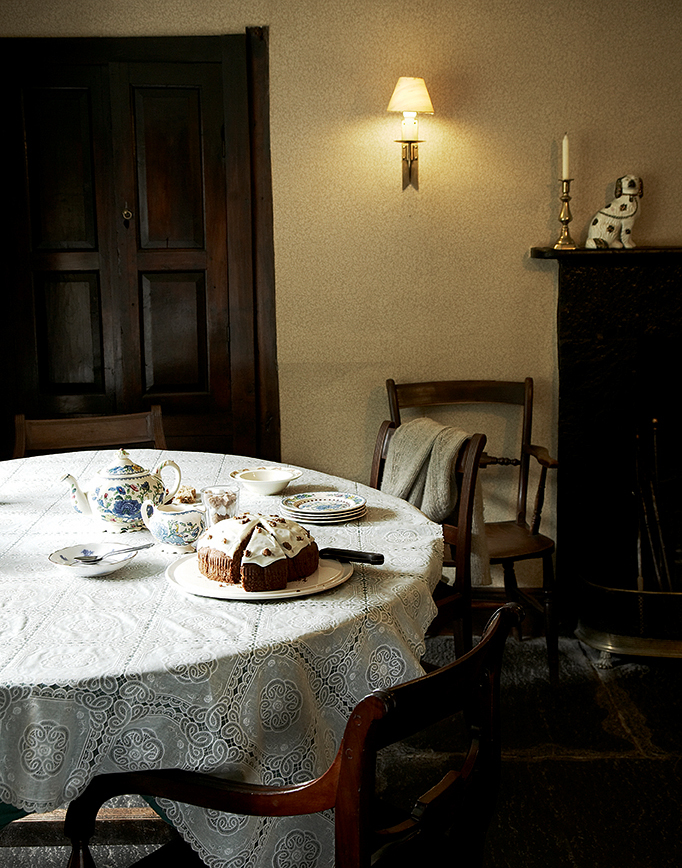
Photo by Kristin Peters
Boasting the freshest fish, Victorian kitchen gardens, hardy Moorland sheep and Devon Red Ruby cattle, North Devon is the hidden gem of the West Country
As the M5 steers you past it and the A38 draws you to South Devon or Cornwall, aside from those who consider board shorts standard attire, North Devon is often overlooked.
Yet in this fair lick of England’s third-biggest county, you have a spectacular, ever-changing coastline; some of the finest fish you'll find in our waters – and caught by the smallest boats, too, landed often just minutes after they’re caught; meat reared on lush pastures and on herb-filled moorland; ancient villages waiting to tell a thousand stories; and also some of the most delicious marmalades you'll ever taste.
North of Dartmoor, with Somerset sitting to the right and Cornwall to the left, North Devon serves up everything you want from a West Country break. It's got the beach, the countryside, the history and, needless to say, the food and drink.
Starting at the Cornish edge, passing sheer cliffs that look as if they’ve been freshly cracked as you go, you find the ancient fishing village of Clovelly almost hidden among a thick nest of trees. You can’t access it via car; instead, take a stroll down its steep, narrow streets and you’ll reach the lovely 14th-century fishing quay, still working, huddled behind a curving stone breakwater. Here, fish, crab and lobster are landed all day, virtually flipping and flapping their way to nearby cafés and restaurants just hours or even minutes after being caught.
Clovelly has been painted by Turner and written about by Dickens, and both probably did so with a belly full of the village's sweet lobster, probably even then served with an array of vegetables from the Victorian kitchen garden of Clovelly Court, which still supplies restaurants with everything from plump figs and ripe apricots to chillies and Chinese gooseberries (as they like to call their kiwis).
The meat options would be plentiful, too: Clovelly Longhorn beef is popular with those locals in-the-know, and the tender, marbled meat of the Devon Red Ruby has earned plaudits from those of the Michelin-starred persuasion, far away in the big cities. If the locals didn’t keep so much of it to themselves, the fragrant honey would impress far and wide, too.
Further up the coast, past the Victorian seaside thrills and beautiful sandy stretch of Westward Ho! (named after a novel, hence the required ‘!’) and you have another mini food haven in Appledore. Pastel-coloured houses, like tightly stacked rows of Edinburgh rock, lead you to the seafront, where it’s de rigueur to stop at The Coffee Cabin for a crab sandwich courtesy of ‘Dan the Fish Man’ (or perhaps some local mussels or oysters from The Royal George, just around the corner), before grabbing a scoop of locally made ice cream from the Hocking's van and heading down the coastal path
to take in the salt marshes and rugged shores.
You then hit the surfing nirvanas of Croyde and Woolacombe (regular UK best beach winner), where, again, chalkboard menus are scrawled with the finest local catch and prime cuts of the Devon Red Ruby. Pop in to Ilfracombe, home to one of the world's top marmalade makers – The Proper Marmalade Company, which added another gold at the last Marmalade Awards for its chocolate-splattered marmalade. From there, follow the gentle curve of the county to the idyllic sister villages of Lynmouth and Lynton, with their water-powered funicular cliff railway connecting the two, one at the bottom of the cliff, the other at the top.
When boundary lines were drawn up, Devon also had the good sense to take for itself a good slice of Exmoor, as with the land came the hardy sheep that roam and graze its moorland. Packed with flavour, having survived in the harshest of environments, Exmoor lamb is another tempting line on North Devon’s never-ending menu.
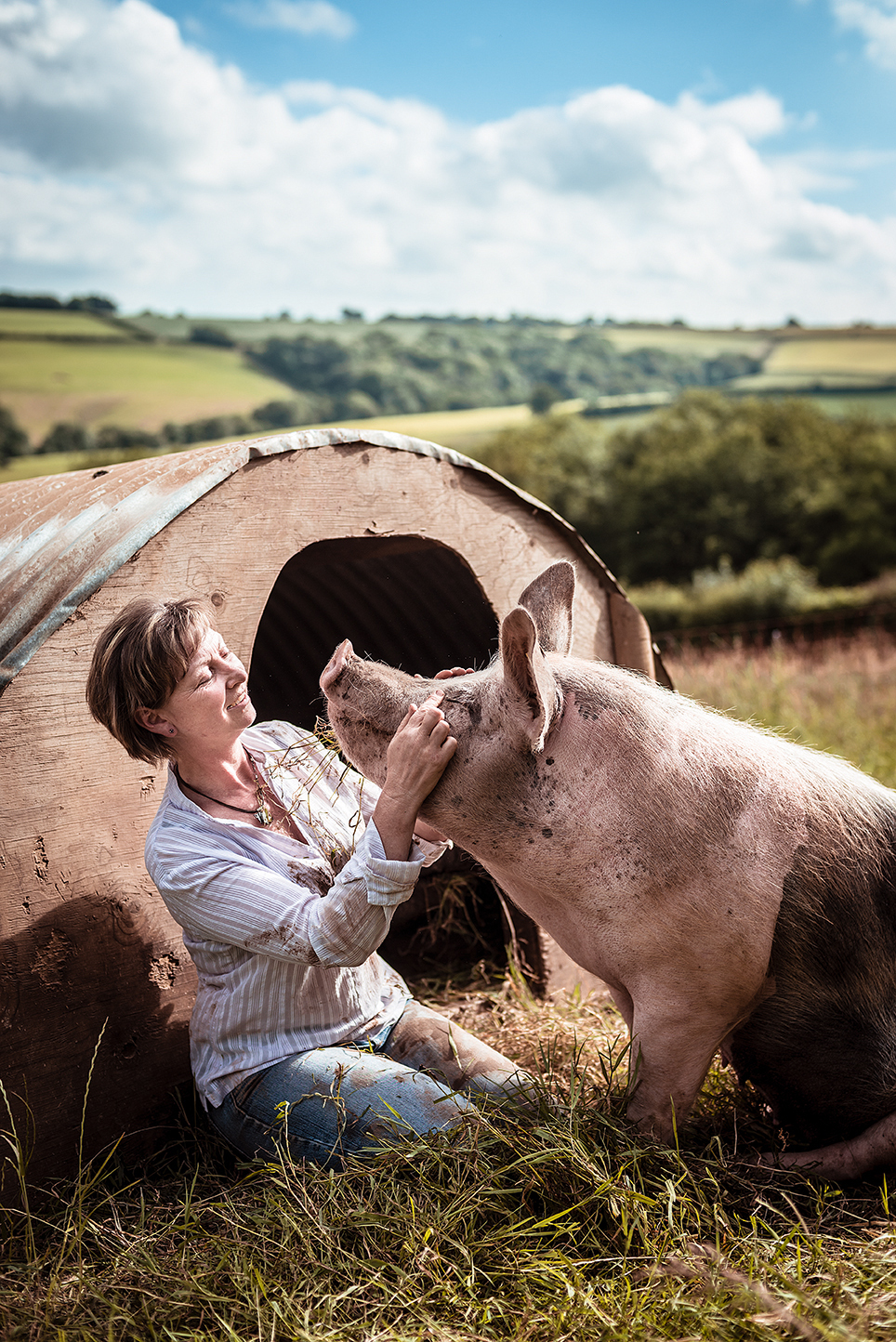
Photo by Mark Parren Taylor
Home to world-famous cheese and a verdant, fertile farming landscape scattered with orchards, Somerset isn't just about cider, but the cider alone warrants a visit to this wonderful county
A lush green landscape, carpeted with gentle hills, dramatic moorland, cut through by gorges chiselled by the gods and criss-crossed with steam railways, Somerset is where kings once fled Viking invaders by hiding in the marshes. It's where ancient armies built their forts and castles and, further back, druids worshipped at stone circles.
When the country was split by Cromwell’s Civil War, Somerset stood largely with royalty, perhaps no surprise, given that the king was said to shun the fine court wines in favour of its favourite drop, cider.
With apples first grown by the Romans, and nurtured by the Normans, cider has been forever entwined within the landscape. At one point in the 1700s, every farmer would have an orchard and a press, workers would be paid with it (in stone jars) and the cider apple varieties were endless. Today, tradition is still strong. At Burrow Hill Cider, the 73ha of cider apple orchards have been serving up those bitter-sweet fruits for more than two centuries, and even now 40 different vintage varietals are grown, from the bitter-sharp, purple-red Kingston Black to the sweeter, rosy-green Yarlington Mill and the smaller, yellow-green Dabinett.
There’s 150 varieties of Somerset apple, taking you from the sharps and bitter-sharps to bitter-sweets and sweets: Sweet Coppin, Harry Masters and Frederick – their names more like those of children than fruit, perhaps a nod to how the county has nurtured them.
Big guns of cider, Thatchers, still calls it home, just as it has done since 1904, based at Myrtle Farm in the foothills of the Mendips, but it’s the likes of Taunton Cider, from the county town, Hecks, a family of cider-makers going back to 1841, and Sheppy’s, which boast a heritage even further back. Soft and rounded with bitter-sweetness, sharp and cloudy, sweet and fizzy – there’s no one cider to pick, but then, with so many different cider apples to choose from and blend, why should you have to.
West of the limestone Mendips is the iconic Exmoor National Park, all wild moorland and woodland valleys, abundant in flora and fauna, red deer roaming the woods, and speckled with the area's much-loved sturdy, stocky ponies.
On its northerly border, which spills into the Bristol Channel, you'll find the sweeping Porlock Bay. In the 1800s it was known for its meaty oysters, a sea- farming practice that died out, only to be revived in recent times, adding another culinary string to its bow.
Exmoor Blue cheese, soft and creamy with a distinct tang, is famed but is made just east of the moors, almost nearer to the majestic Quantock Hills. It’s joined on the county’s cheese line-up by the amber, smoky Applewood, and the nutty Wellesley, made from raw’s goat’s milk and left to mature in the wheels for a total of six months.
These are mere sideshows in Somerset’s cheese hierarchy, however, where Cheddar is always king. Said to have first been created from the unique ageing process in the caves of Cheddar Gorge, only the Cheddar Gorge Cheese Company still uses its eponymous home, but other Cheddars have taken it to another level. The rich, crumbly, melt-in-the-mouth Montgomery’s; the creamy Keen’s; the sweet complexity of Ogleshield: Somerset’s cheeseboard is dominated by the hard cheese.
Served with a local cider, or perhaps a pot of mead – the honey wine also has a rich history in the county – Cheddar is a traditional favourite that goes back to the 11th century, and yet still continues to get better and better, forever guaranteeing Somerset’s place on every gourmand’s culinary map.
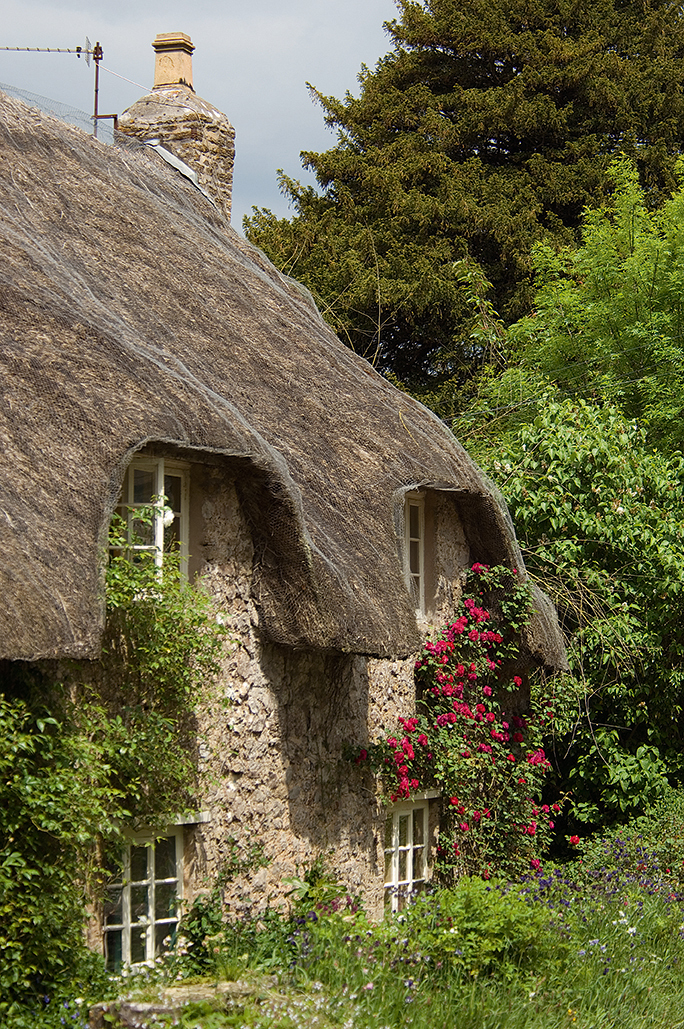
Photo by Rob Whitrow
With watercress that's so good it has its own railway line and royal family, it's not for nothing that Hampshire is so proud of its produce
Once a year the Watercress King and Queen are crowned in Alresford, a small town on the edge of the South Downs and just ten minutes’ drive from England’s ancient capital of Winchester. As part of their coronation they’ll share bunches of watercress with revellers and then witness the annual watercress-eating championship. Surrounding them will be traders selling the wares of a well-stocked county: pork from the roaming acorn-fed New Forest; the smoothest of ice cream from the milk of the buffalo; lamb from native Hampshire Down stock; and truffle oils or even truffles themselves from the New Forest. Then there are the cakes made with flour from the Winchester City Mill; trout and other fish from the River Test; plus countless dishes made using the county favourite – watercress cupcakes, watercress and ale sausages, watercress smoothies and even watercress fudge.
Hampshire has always been something of a kitchen garden for London restaurants, never more so than during the watercress heyday, when a train line connecting Alresford to the network allowed it to be taken – along with numerous other green goods from the fields – to Covent Garden market for sale.
The route – known as the Watercress Line – still runs today, albeit for steam-train enthusiasts rather than for the transport of the county’s 'green gold'. The line has four stops on the site of former British Rail stations. Setting off from Alton, at the north-east of the line, it passes through Medstead and Four Marks and Ropley, before arriving in Alresford, where passengers can stroll around shops and a museum. Watercress remains a mainstay of local menus in the town, with pubs such as Alresford’s 15th-century The Globe peppering its menu with dishes featuring it, including a crumbly watercress and walnut tart, and peppery watercress and pork sausages.
Hampshire is a green and blue county, almost half of it made up of the national parks of New Forest and South Downs, but also home to two of England’s biggest ports, in Southampton and Portsmouth. The rivers that splice through it also run clean and clear, making them the perfect home for not only watercress, but also another subject immortalised in festival form: Trout ‘n About in the quaint town of Stockbridge, 30 minutes' west of Alresford. In the Test Valley, entwined with tentacles of the chalk stream that is the River Test, Stockbridge and Hampshire rightly celebrate their trout; it’s up there among the country’s best, as is the salmon.
Accompanying your watercress and trout dishes, you might find any one of a vast array of local craft brews, or a glass of wine from the growing number of Hampshire vineyards. Perhaps a sparkler from Hattingley Valley, an award-winning winery run by owner Simon Robinson and winemaker Emma Rice that turned over 10ha of chalky, sloping field to
vines of pinot noir, chardonnay and other grapes.
At Stockbridge, the biggest fair was once for the local sheep, the Hampshire Down – part of the landscape since the 1800 – known for its sweet marbled meat. These days, it shares that landscape with a very different beast: the water buffalo.
When Dagan James – an artist by trade – inherited a farm near Stockbridge from his grandfather almost 20 years ago, he chose not to opt for livestock or agriculture, but for an animal that would be hardy in ever-changing conditions. The water buffalo arrived, and he now has 250 on the Chalk Downs. High in protein, lean and packed with flavour, it’s on menus across the county and beyond. And he’s not alone in the water buffalo trade; 29km away, former Formula One driver Jody Schechter has his own 500-strong herd. There’s very little that goes to waste: Cheddar, burgers, Gouda, mozzarella, ice cream – buffalo has never been used in so many forms. It might not be a classic Hampshire flavour, but at least it gives the locals something new to try with their watercress.
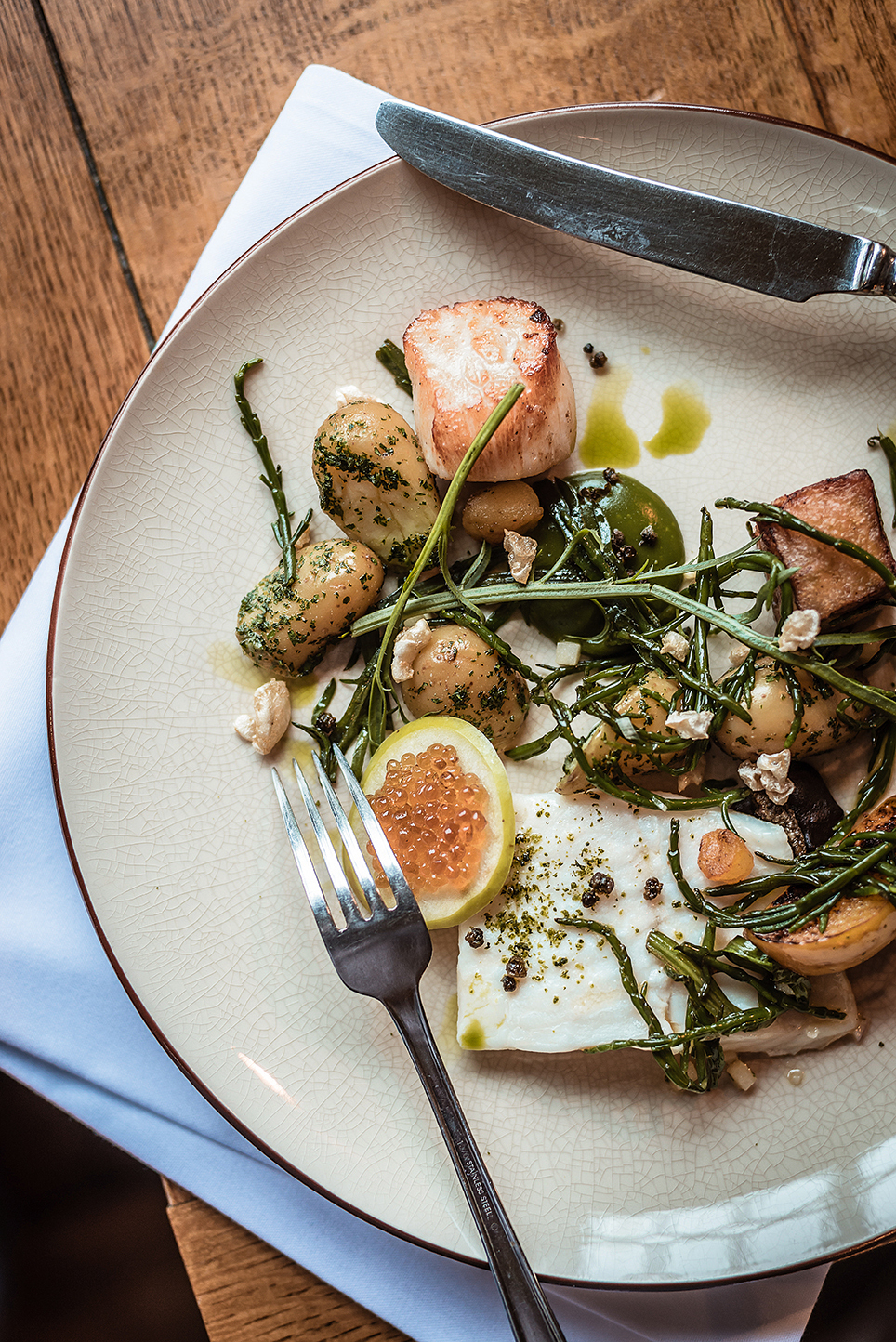
Photo by Mark Parren Taylor
Subscribe and view full print editions online... Subscribe